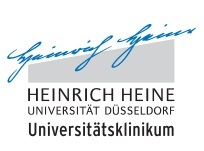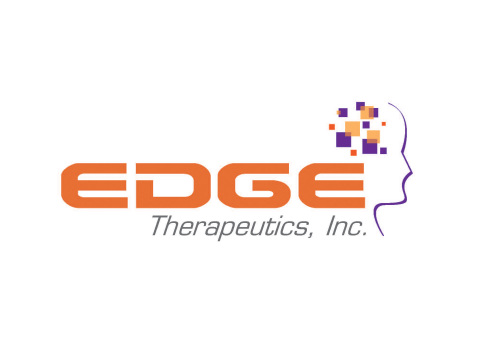NEW PROVIDENCE, N.J. & DÜSSELDORF, Germany--(BUSINESS WIRE)--Edge Therapeutics announced today positive preliminary results from the first human use of EG-1962, the Company’s novel bioabsorbable nimodipine microparticle formulation for the prevention of delayed cerebral ischemia (DCI), a life-threatening complication of subarachnoid hemorrhage (SAH), typically resulting from a ruptured brain aneurysm or traumatic brain injury. There are approximately 90,000 patients in North America and Europe who are at risk for DCI, most of whom would be candidates for EG-1962.
Researchers at Heinrich-Heine-University Hospital in Düsseldorf, Germany conducted an open-label study to assess the safety and tolerability of EG-1962, which delivers therapeutic and sustained concentrations of nimodipine directly to the site of brain injury. Eleven patients were treated and 10 met pre-defined enrollment criteria, which included a low level of consciousness on admission to the emergency room and high hemorrhage volumes. Investigators found that there were no adverse events or other safety concerns related to EG-1962. Additionally, good clinical outcome, as measured by the Glasgow Outcome Scale (GOS) 30 days after SAH, was observed in all 10 patients who met the enrollment criteria. Based on similar patients treated in past clinical studies, researchers would have expected approximately half of these patients to suffer a poor outcome, such as death, persistent vegetative state or severe disability. An oral presentation of these data is scheduled during Vasospasm 2013, the 12th International Conference on Neurovascular Events after Subarachnoid Hemorrhage, on Fri., July 12, 2013 in Lucerne, Switzerland.
“Our early clinical experience shows that one-time administration of EG-1962 has the potential to prevent a major cause of death or permanent disability after SAH,” said Daniel Hänggi, M.D., principal investigator of the study and Vice Chairman of the Department of Neurosurgery at Heinrich-Heine-University. “We are eager to participate in further research to investigate this promising and potentially life-saving therapy in our new investigator-initiated study under the auspices of the Bundesinstitut für Arzneimittel und Medizinprodukte (BfArM, the German Institute for Drugs and Medical Devices).”
“The early clinical results and lack of side-effects with EG-1962 are striking,” noted R. Loch Macdonald, M.D., Ph.D., Head of the Division of Neurosurgery and Keenan Endowed chair in Surgery at St. Michael’s Hospital in Toronto, Ontario, Canada, and Chief Scientific Officer of Edge Therapeutics. “Given these positive early results, EG-1962 may provide physicians with a powerful tool to reduce the risk of poor outcomes that threaten these already vulnerable patients.”
Nimodipine is the standard of care for the prevention of DCI worldwide. However, many researchers believe currently approved oral and intravenous formulations of nimodipine deliver sub-optimal concentrations to the site of brain injury and have shown only modest efficacy in reducing poor outcomes after aneurysmal SAH. Previous efforts to administer higher doses of nimodipine have been limited by serious side effects such as hypotension.
“Despite efforts to prevent DCI, many patients continue to suffer a secondary stroke or even death 3 to 14 days after their hemorrhage,” said Brian Leuthner, President and CEO of Edge Therapeutics. “The average age of patients who develop DCI is 50 years old and their complications are often catastrophic. There have been no approved therapies for DCI in almost 25 years, and we are hopeful that EG-1962 might one day become a new treatment option for these patients.”
Edge announced earlier this month that the U.S. Food and Drug Administration (FDA) has accepted the Company’s Investigational New Drug (IND) application for EG-1962. The opening of the lND will allow the company to begin enrolling patients in a Phase 1/2 clinical trial evaluating the safety and tolerability of EG-1962 for prevention of DCI. The multinational Phase 1/2 trial, expected to commence in the third quarter of 2013, is to be conducted separately from the Heinrich-Heine-University investigator-initiated study, and will include up to 96 patients in approximately 20 centers in North America and Europe.
About Delayed Cerebral Ischemia
Delayed cerebral ischemia (DCI) is a delayed, life-threatening neurological condition that occurs as a result of SAH, which is most commonly caused by aneurysmal SAH or traumatic brain injury (TBI). DCI is a major cause of death and disability in patients who are treated in the hospital for SAH.1,2,3 According to the World Health Organization and the International Brain Injury Association, at least two million people each year suffer conditions that put them at risk for DCI. DCI commonly affects the working population (average age 50 years old) and occurs in approximately one-third of patients during the first two weeks after SAH, often resulting in substantial disability or death.1
About Edge Therapeutics, Inc.
Edge Therapeutics, Inc. is a private, clinical-stage biopharmaceutical company focused on developing and commercializing life-saving hospital products that improve patient outcome by addressing acute, fatal or debilitating conditions after brain hemorrhage that have no current effective treatment. Edge uses its novel site-specific and sustained-release microparticle technology platform to deliver drugs to the brain to prevent complications of subarachnoid hemorrhage, subdural hematoma and intracerebral hemorrhage, all of which currently have no effective therapies. The Company’s patent-protected bio-absorbable microparticle formulations release drugs locally and consistently at therapeutic concentrations in the brain, with the objective of maximizing therapeutic activity and avoiding treatment-limiting systemic side effects seen with current treatments. Currently, oral- or IV-administered therapies are employed in suboptimal concentrations due to the generation of systemic side effects. Edge’s lead product candidates, EG-1962 (nimodipine microparticles) and EG-1964, are being developed to prevent various delayed complications after brain hemorrhage. EG-1962 is a proprietary microparticle formulation of the calcium channel blocker nimodipine, while EG-1964 delivers a hemostatic agent. For more information on Edge Therapeutics, Inc., please visit: www.edgetherapeutics.com.
About Heinrich-Heine-University Hospital Düsseldorf
Heinrich-Heine-University Hospital Düsseldorf is a teaching hospital with specialty areas in neurosciences, cardiology and vascular medicine, diabetes mellitus, environmental medicine, hepatology, infection biology and molecular biology of aging. More than 190,000 patients are treated annually at the university’s 30 clinics and 31 institutes. The close integration of patient care, research and medical training in one place presents decisive advantages for the patient – as well as for the medical students.
Medical research at a university is fundamental, disease-oriented and patient-oriented, and is a result of the university clinic and the medical faculty of Heinrich-Heine-University working closely together towards constant improvement in our understanding of illness. This is the basis for new methods in diagnostics and therapy that are regularly tested in supraregional clinical studies and are made available to the patient as rapidly as possible. For more information, please visit: www.uni-duesseldorf.de.
Forward Looking Statements
This press release and any statements of representatives and partners of Edge Therapeutics, Inc. (the “Company”) related thereto contain, or may contain, among other things, certain “forward-looking statements” as defined in the meaning of the Private Securities Litigation Reform Act of 1995. Such forward-looking statements involve significant risks and uncertainties. Such statements may include, without limitation, statements with respect to the Company’s plans, objectives, projections, expectations and intentions and other statements identified by words such as “projects,” “may,” “will,” “could,” “would,” “should,” “believes,” “expects,” “anticipates,” “estimates,” “intends,” “plans,” “potential” or similar expressions. These statements are based upon the current beliefs and expectations of the Company’s management and are subject to significant risks and uncertainties. Actual results may differ significantly from those set forth in the forward-looking statements. These forward-looking statements involve certain risks and uncertainties that are subject to change based on various factors (many of which are beyond the Company’s control). The Company undertakes no obligation to publicly update any forward-looking statements, whether as a result of new information, future events or otherwise, except as required by applicable law.
| _______________________ |
|
1 Frontera JA, Fernandez A, Schmidt JM, et al. Defining vasospasm after subarachnoid hemorrhage: what is the most clinically relevant definition? Stroke 2009;40:1963-8. 2 Kassell NF, Torner JC, Haley EC Jr, Jane JA, Adams HP, Kongable GL. The International Cooperative Study on the Timing of Aneurysm Surgery. Part 1: Overall management results. J Neurosurg 1990;73:18-36. 3 Vergouwen MD, de Haan RJ, Vermeulen M, Roos YB. Effect of statin treatment on vasospasm, delayed cerebral ischemia, and functional outcome in patients with aneurysmal subarachnoid hemorrhage: a systematic review and meta-analysis update. Stroke 2010;41:e47-e52. |





